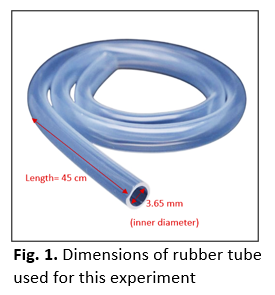Investigate How the Height Difference Affects the Flow Rate by Use Siphon System
DOI:
https://doi.org/10.37934/sjotfe.4.1.2534aKeywords:
Siphon system, Bernoulli's equation, fluid dynamics, flow rate, elevation difference, Reynolds numberAbstract
A siphon system is a simple yet fascinating example of fluid dynamics, where liquid flows from a higher reservoir to a lower one through a tube due to gravity and atmospheric pressure. A siphon system, governed by Bernoulli's equation, represents a practical application of fluid dynamics, enabling fluid transfer between reservoirs of differing heights without mechanical assistance. This study aims investigates the relationship between height difference and flow rate in a siphon system, utilizing two distinct fluids: water and oil. The research aims to bridge theoretical predictions and empirical observations, focusing on optimizing siphon performance in real-world applications. The experiment employed a siphon system consisting of a rubber tube with a fixed diameter 3.65 mm and length 50 cm. Measurements were conducted at five height differences 0, 5, 10, 15, and 20 cm. The flow rates were calculated as the volume transferred in one minute, with the cross-sectional tube area constant. Water and oil were used to examine the effects of viscosity and density on fluid dynamics. The results confirmed that as the height difference increased, so did the flow rate for both fluids. For water, flow rates ranged from 5.17 μm³/s at 0 cm to 11.3 μm³/s at 20 cm. In contrast, oil's flow rates were significantly lower, increasing from 0.133 μm³/s at 0 cm to 0.417 μm³/s at 20 cm. Based on the results, the higher flow rates of water are attributed to its lower viscosity compared to oil. Experimental velocity calculations aligned closely with theoretical predictions for water but deviated for oil, highlighting energy losses due to viscosity and friction. The study concludes that the height difference significantly influences siphon flow rates, with fluid properties such as viscosity and density playing critical roles. Water demonstrated superior efficiency for siphon systems, while oil required greater height differences to achieve comparable performance. These findings underscore the need to consider fluid characteristics when designing siphon systems for industrial and agricultural applications.









